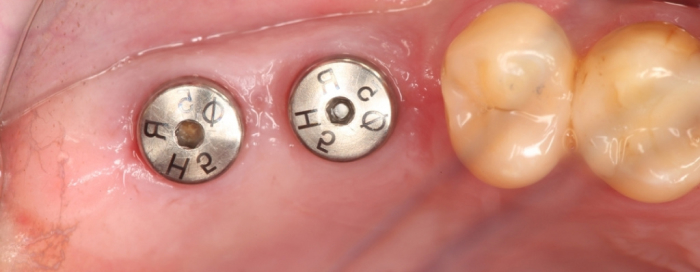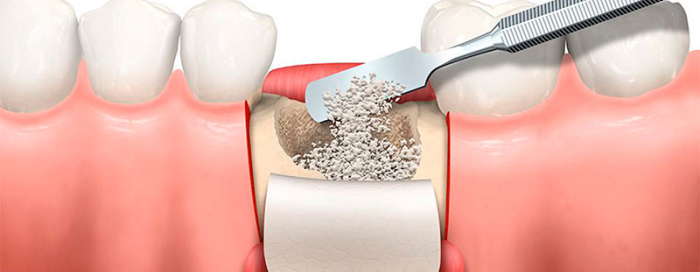There is a myth that implants are a dental service for older people. This is no longer the case, as implants are no longer golden teeth (unless you decide otherwise), but rather teeth that are indistinguishable from natural ones.
What is implantation and who needs it?
Implantation is used when one or more teeth are lost, as well as in cases of complete tooth loss.
What does an implant look like?
An implant is a titanium rod with threads that is inserted into the bone, replacing the tooth root and serving as a support for a crown, bridge, or denture.
How does the implantation process occur?

Comprehensive consultation during which the dentist thoroughly conducts an interview, examination, performs a 3D examination of the jaws, analyzes, photographs the condition of the oral cavity, and develops a preliminary treatment plan. The oral surgeon determines the shape and size of the implants.
Preparatory stage. Treatment process of identified oral cavity diseases: professional hygiene, caries treatment, root canal treatment, and other procedures.
Manufacturing of a navigational template (not always used). At LAMA Dentistry, we conduct jaw scanning. Then, using modern technologies in our dental laboratory, a surgical template is crafted. This template is necessary to eliminate possible errors and make the prosthetic process more predictable. The operation is performed as accurately as possible according to a pre-established plan, taking into account all the anatomical features of your jaw structure.
The implantation procedure involves the following steps:
1. The dentist administers a local anesthetic injection to numb the area.
2. A small incision is made in the gum tissue at the site of the missing tooth.
3. A navigational template is placed over the dental arch to guide the procedure.
4. Using specialized instruments, the dentist creates a socket in the bone tissue.
5. The implant is carefully inserted into the socket.
6. The implant is covered with gum tissue, and stitches are placed to close the incision.
At LAMA Dentistry, we ensure a seamless and comfortable implantation process. Contact us to inquire about pricing.
Additional surgical procedures may be necessary depending on the bone structure and volume in the area where the implant is planned. Sufficient bone quantity and density are crucial for successful implant integration, and if these conditions are not met, there may be a risk of implant rejection. During the initial consultation, our specialist carefully analyzes the bone structure using diagnostic imaging. If bone deficiency due to atrophy is observed, bone augmentation (bone grafting) may be planned. In this procedure, the dental surgeon increases the height and width of the bone using special bone graft materials to create the necessary foundation for implant placement.

Bone augmentation procedures can be performed either during the implant surgery itself or scheduled 6-8 months before the operation. The approach is determined by the dentist based on the complexity of the clinical case.
- Closed sinus lift: This procedure is done when there is insufficient bone tissue in the area of the maxillary sinus for implantation. Bone material is introduced without an incision of the oral mucosa.
- Open sinus lift: This is more commonly performed in practice. To replenish the deficiency of bone tissue in the maxillary sinus area, an incision is made in the mucous membrane, bone material is introduced, and stitches are applied.
- Alveolar ridge splitting: This is a type of bone augmentation where the bone is split, the implant is inserted, bone material is added, and the area is sutured.
- Use of a biomembrane.
- Bone block grafting: This procedure is performed in cases of significant bone tissue atrophy. A bone block is placed in the atrophied area, usually taken from another area of the patient’s body, such as the chin.
- Guided bone regeneration: This method is used for moderate bone atrophy. The gum is incised, bone material is inserted, and stitches are applied.
- Osseointegration: This is the period of waiting, which takes from 3 to 12 months, during which the implant fuses with the bone tissue.
- Placement of Healing Abutment: After osseointegration, a healing abutment is installed, which presses the gum, creating the correct gingival contour for the future crown. Under anesthesia, an incision is made in the gum and the healing abutment is screwed in.
- Taking impressions.
- Fixation of the crown.
The process of implant placement at LAMA dentistry in Warsaw may take more than one month, but the result is a beautiful and healthy smile that will restore your confidence and comfort.

